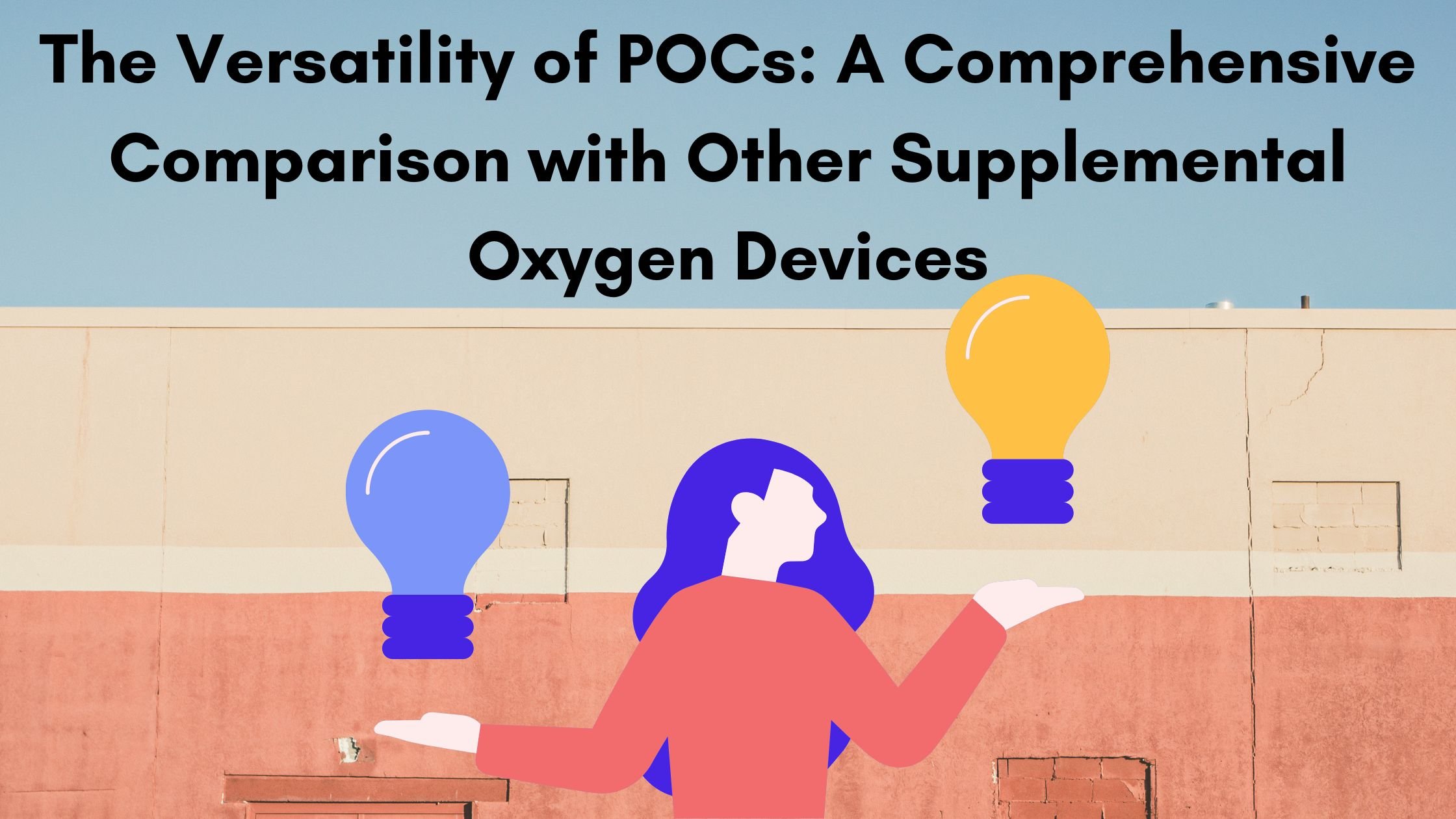
For individuals who suffer from chronic respiratory conditions or need supplemental oxygen due to various health conditions, the ability to lead an active and fulfilling life is crucial. Oxygen therapy plays a vital role in maintaining their quality of life and overall well-being.
Traditionally, oxygen therapy relied on stationary oxygen delivery systems, but advancements in medical technology have introduced portable oxygen concentrators (POCs), revolutionizing the way patients access supplemental oxygen. In this blog, we will delve into how portable oxygen concentrators compare to other supplemental oxygen devices, highlighting the unique benefits they offer.
Supplemental Oxygen Therapy as Treatment for Respiratory Disease

Chronic Obstructive Pulmonary Disease (COPD) and other respiratory diseases can be debilitating conditions that progressively impact lung function over time. These diseases, which include conditions like emphysema and chronic bronchitis, are often characterized by chronic inflammation, narrowing of airways, and reduced lung capacity.
As the diseases advance, patients may experience increasing shortness of breath, persistent cough, and decreased ability to perform everyday tasks. In severe cases, the progressive damage to the lungs may reach a point where the body's oxygen levels become critically low, leading to hypoxemia.
At this stage, supplemental oxygen therapy becomes a necessary treatment to increase life expectancy and improve the overall quality of life. By providing a steady and reliable source of oxygen, supplemental oxygen therapy alleviates the strain on the heart and other organs, enhances physical endurance, and reduces the risk of life-threatening complications, ultimately offering patients a chance to lead a more fulfilling and extended life.
When you and your doctor determine that it is time to initiate oxygen therapy, it's essential to understand that this decision is made with your best interests in mind. The decision to start oxygen therapy is typically based on several factors, including the severity of your respiratory condition, your lung function test results, and your symptoms.
Here are the options you can explore when it's time to begin supplemental oxygen:
- Portable Oxygen Concentrators (POCs)
- Stationary Oxygen Concentrators:
- Oxygen Cylinders:
- Liquid Oxygen Systems:
Your doctor will work closely with you to determine the most appropriate oxygen delivery system based on your lifestyle, oxygen needs, and medical requirements. They will provide guidance on how to use the chosen device properly, including information about flow rates, battery usage (if applicable), and maintenance.
Regular follow-up appointments will be scheduled to monitor your progress and adjust your oxygen therapy as needed to ensure you receive the best possible care and support in managing your respiratory condition effectively. Remember that oxygen therapy, when used as prescribed, can significantly improve your quality of life and help you stay more active and engaged in daily activities.
Stationary Oxygen Tanks
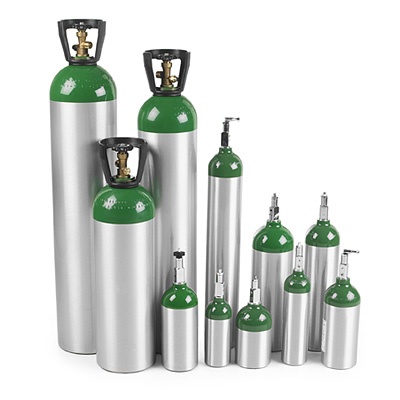
Stationary oxygen tanks, commonly referred to as oxygen cylinders, have been the primary source of oxygen therapy for many years. While they are effective in providing a continuous flow of oxygen, they are bulky, heavy, and severely limit mobility. Patients using stationary tanks are confined to their homes, leading to a restricted lifestyle and a diminished sense of independence.
In contrast, portable oxygen concentrators offer a liberating experience, as they are lightweight and designed to be carried easily. The convenience of a portable concentrator allows users to engage in various activities, both indoors and outdoors, without worrying about running out of oxygen or compromising their freedom.
Liquid Oxygen Systems
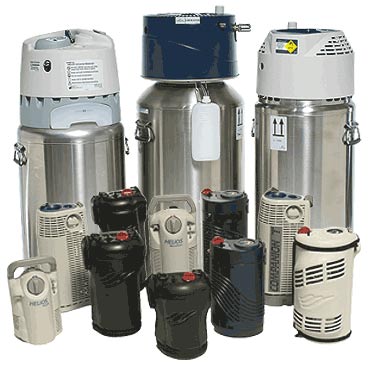
Liquid oxygen systems, although more portable than stationary tanks, still have their limitations. These systems require constant refilling, which can be cumbersome and potentially dangerous if mishandled. Moreover, users may face difficulties accessing liquid oxygen refilling stations, especially in rural or remote areas.
Portable oxygen concentrators, on the other hand, produce oxygen from the surrounding air, eliminating the need for refilling. This self-sufficiency ensures that users can enjoy their daily routines without any interruption, and they can even travel by air without hassle since POCs are approved for use during flights by most airlines.
Compressed Gas Oxygen Systems

Compressed gas oxygen systems, often known as oxygen canisters, are more portable than stationary tanks but come with their limitations. Similar to liquid oxygen systems, these canisters require frequent replacement when emptied, which can be both costly and inconvenient for users.
In contrast, portable oxygen concentrators do not rely on oxygen canisters or cylinders. They are powered by rechargeable batteries, allowing users to easily charge their devices and have continuous access to oxygen without the need for replacements. This makes POCs a more cost-effective solution in the long run.
Oxygen Conserving Devices
Oxygen conserving devices are designed to optimize the use of oxygen and extend the duration of oxygen supply from a tank. While they offer some mobility benefits, they still necessitate carrying a heavy tank, which can be burdensome, especially for elderly or physically impaired users.
Benefits of Using a Portable Oxygen Concentrator

Portable oxygen concentrators, weighing significantly less than traditional oxygen tanks, provide unparalleled mobility and convenience. They allow users to explore the outdoors, engage in physical activities, and maintain social connections without the limitations imposed by conventional oxygen delivery systems.
When considering portable oxygen concentrators (POCs), two primary types of delivery systems are available: pulse flow POCs and continuous flow POCs. Each type offers distinct advantages, and the choice between them depends on individual needs and the specific requirements of the patient's respiratory condition.
Pulse Flow POCs:
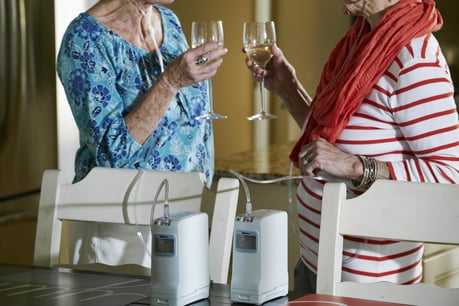
Pulse flow POCs, also known as on-demand or intermittent flow POCs, deliver oxygen in short bursts or pulses, synchronized with the user's breathing. These devices are designed to detect the start of inhalation and release oxygen accordingly, ensuring that oxygen is delivered precisely when needed during inhalation. Pulse flow POCs are particularly well-suited for users with relatively minor oxygen needs, or during periods of activity and exertion when oxygen demand may increase.
Advantages of Pulse Flow POCs:
Energy Efficiency: Pulse flow POCs are highly energy-efficient, extending battery life and enabling longer use without recharging.
Lightweight and Compact: These devices are often smaller and lighter than continuous flow POCs, making them ideal for individuals with active lifestyles or those who frequently travel.
Continuous Flow POCs:
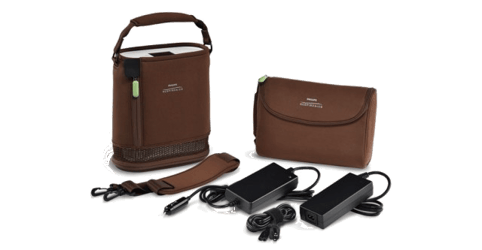
Continuous flow POCs, as the name suggests, deliver a constant and steady flow of oxygen to the user, regardless of their breathing pattern. These devices are suitable for individuals with higher oxygen requirements or those who require oxygen during periods of rest or sleep when breath rate may vary.
Advantages of Continuous Flow POCs:
Consistent Oxygen Delivery: Continuous flow POCs ensure a steady supply of oxygen, making them suitable for users who need a stable flow, even at rest or during sleep.
Versatility: Continuous flow POCs can meet the oxygen needs of a broader range of patients, including those with more severe respiratory conditions or higher oxygen demand.
Choosing Between Pulse Flow and Continuous Flow POCs:
The decision between pulse flow and continuous flow POCs largely depends on the specific medical requirements of the patient and their lifestyle preferences. Here are some considerations to guide the choice:
Oxygen Requirements: Patients with moderate to severe respiratory conditions or those requiring a higher constant flow of oxygen may benefit from continuous flow POCs. On the other hand, those with milder oxygen needs or individuals who are frequently active may find pulse flow POCs sufficient to meet their requirements.
Activity Level: If you lead an active lifestyle and require oxygen primarily during physical activities, pulse flow POCs offer greater convenience due to their lightweight and energy-efficient design. Continuous flow POCs may be more suitable if you require a constant oxygen supply during periods of rest or sleep.
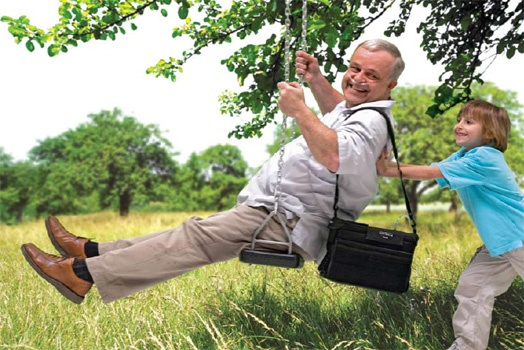
Portability: Pulse flow POCs are generally more compact and easier to carry, making them a preferred choice for individuals who value mobility and freedom of movement.
Both pulse flow and continuous flow POCs have their unique benefits and serve specific patient needs. Consulting with your healthcare provider or a respiratory specialist is crucial in determining which type of POC aligns best with your medical condition, lifestyle, and oxygen requirements, ensuring you receive optimal oxygen therapy to enhance your overall well-being and quality of life.
Conclusion
Portable oxygen concentrators have transformed the landscape of supplemental oxygen therapy, offering an unmatched combination of mobility, convenience, and efficiency. While traditional oxygen delivery systems like stationary tanks, liquid oxygen, compressed gas cylinders, and oxygen conserving devices served their purpose in the past, they often came with significant drawbacks that affected the users' quality of life.
The portability and ease of use offered by POCs have revolutionized the lives of those who require oxygen therapy. With the ability to stay active and enjoy various activities without constant refilling or carrying heavy tanks, users experience a renewed sense of independence and well-being. As technology continues to advance, portable oxygen concentrators will undoubtedly continue to improve, offering even greater benefits to patients and enhancing their journey towards a healthier, more fulfilling life.



